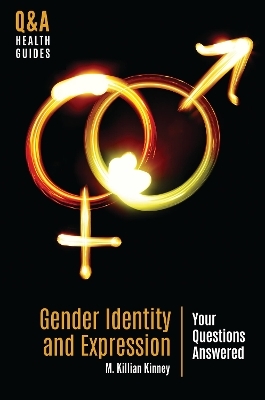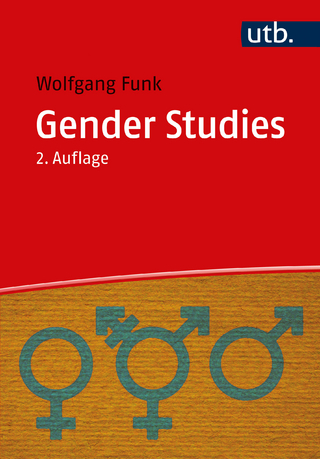
Gender Identity and Expression
Bloomsbury Academic (Verlag)
978-1-4408-7831-2 (ISBN)
- Noch nicht erschienen (ca. Mai 2025)
- Versandkostenfrei innerhalb Deutschlands
- Auch auf Rechnung
- Verfügbarkeit in der Filiale vor Ort prüfen
- Artikel merken
Gender is an essential part of all our lives, whether we recognize it as such or not and regardless of how we identify and express that identity. Gender informs how we feel about ourselves, the clothes we wear, how we engage with others, and much more. This volume’s 48 questions cover concepts such as gender roles and norms, the binary gender system and cisnormativity, gendered language, and gender discrimination and bias. Readers will also discover practical guidance on topics such as confronting gender-based bullying and advocating for the rights of gender diverse individuals.
Augmenting the main text, a collection of 5 case studies illustrate key concepts and issues through relatable stories and insightful recommendations. The Common Misconceptions section at the beginning of the volume dispels 5 long-standing and potentially dangerous myths about gender identity and expression, directing readers to additional information in the text. The glossary defines terms that may be unfamiliar to readers, while the directory of resources curates a list of the most useful books, websites, and other materials. Finally, whether they’re looking for more information about this subject or any other health-related topic, readers can turn to the Guide to Health Literacy section for practical tools and strategies for finding, evaluating, and using credible sources of health information both on and off the Internet.
M. Killian Kinney, PhD, MSW, is assistant professor of social work at Pacific University and co-director of the Queer Social Work Lab.
Series Foreword
Acknowledgements
Preface
Introduction
Guide to Health Literacy
Common Misconceptions about Gender Identity and Expression
1. You can tell someone’s gender by looking at them (for example, their clothing, mannerisms, haircut, or vocal intonations)
2. All transgender and nonbinary people have known their gender since they were very young
3. People who transition very young eventually regret it and detransition
4. All transgender and nonbinary individuals experience gender dysphoria, which is a mental illness because it is listed in the Diagnostic and Statistical Manual of Mental Disorders (DSM)
5. Only transgender and nonbinary individuals can be gender nonconforming
Questions and Answers
General Information
1. What is gender identity?
2. How does someone know their gender identity?
3. What is gender expression, and how is gender expressed?
4. What are gender norms and gender roles?
5. What is gender nonconformity, and does it only apply to transgender and nonbinary individuals?
6. How many people identify as transgender and nonbinary in the United States? In the world?
7. What does it mean to be intersex? How does intersex relate to gender identity and expression?
Gendered Experiences
8. What is the gender binary?
9. What are gendered experiences?
10. What is gendered language? What is genderless language that I can use?
11. What are the benefits and challenges of living in this binary world for transgender, nonbinary, and cisgender individuals?
12. What are gender euphoria and gender dysphoria?
Coming Out and Transitioning for Transgender and Nonbinary Individuals
13. How does someone come out? What are some considerations for coming out?
14. What are the possible challenges and benefits of being out?
15. What does it mean to transition, and do all transgender and nonbinary individuals transition in the same way?
16. At what age do transgender and nonbinary people typically transition? Does transitioning end?
17. What is gender affirming care?
18. How accessible is social and medical transitioning for trans and nonbinary individuals?
19. What is detransitioning, and why is it controversial?
Microaggressions, Discrimination, and Stigma
20. What is cisnormativity?
21. What are microaggressions and which specific microaggressions are transgender and nonbinary individuals most likely to face?
22. What are stereotypes and how can they be harmful?
23. What is stigma, and how does it relate to gender identity and expression?
24. What common forms of gender-based discrimination do transgender and nonbinary people experience?
25. What is transphobia, and how does it impact transgender and nonbinary individuals’ lives?
26. What short- and long-term impacts can microaggressions, discrimination, and stigma have on transgender and nonbinary individuals’ lives?
27. What is stealth, and why do people use it?
Cultural and Media Representation of Gender Diversity
28. Why is transgender and nonbinary representation important?
29. How does media representation enforce the binary gender system and “acceptable” ways to express gender? And what are some gender-affirming examples?
30. How have transgender and nonbinary people been historically represented?
31. How has the media portrayed gender diversity, and what impact has this had on transgender and nonbinary individuals?
Policies and Laws
32. Is it against the law to discriminate against someone based on their gender identity and expression? What legal protections do transgender and nonbinary people have?
33. What are bathroom bills, and why are they controversial?
34. What is conversion therapy and why it is banned in many states?
35. Concerning access to healthcare, what policies exist for transgender and nonbinary individuals?
36. How can I stay updated on gender-related policies and ways to improve these policies?
Support for Transgender and Nonbinary Individuals
37. What are the important support networks for transgender and nonbinary young people and adults?
38. What are GSAs, and why are they important in schools?
39. What can I do if my family or friends don’t understand or support my gender identity?
40. Where can I find transgender and nonbinary community as a gender diverse person?
41. How can I constructively react and respond to gender microaggressions?
Allyship for Transgender and Nonbinary Individuals
42. How can I support transgender and nonbinary individuals and act in allyship?
43. What if I don’t understand my friend’s exploration of gender or transitioning?
44. Where can I learn more about transgender and nonbinary individuals and communities?
45. How do I respectfully speak about gender?
46. How do I ask someone about their gender (e.g., pronouns, chosen name)?
47. How do I respond when I see someone being bullied for their gender identity or expression?
48. How do I create a supportive space for transgender and nonbinary people as well as gender nonconforming individuals regardless of their gender?
Case Studies
Case 1: Shawna Overcomes a Personal Challenge
Case 2: Transformational Love
Case 3: Stereotypes can hurt everyone
Case 4: The Supportive World of Z
Case 5: Creating a Genderfull Life
Directory of Resources
Glossary
Index
About the Author
| Erscheint lt. Verlag | 1.5.2025 |
|---|---|
| Reihe/Serie | Q&A Health Guides |
| Verlagsort | London |
| Sprache | englisch |
| Maße | 156 x 235 mm |
| Themenwelt | Geisteswissenschaften ► Psychologie |
| Sozialwissenschaften ► Soziologie ► Gender Studies | |
| ISBN-10 | 1-4408-7831-5 / 1440878315 |
| ISBN-13 | 978-1-4408-7831-2 / 9781440878312 |
| Zustand | Neuware |
| Haben Sie eine Frage zum Produkt? |
aus dem Bereich


